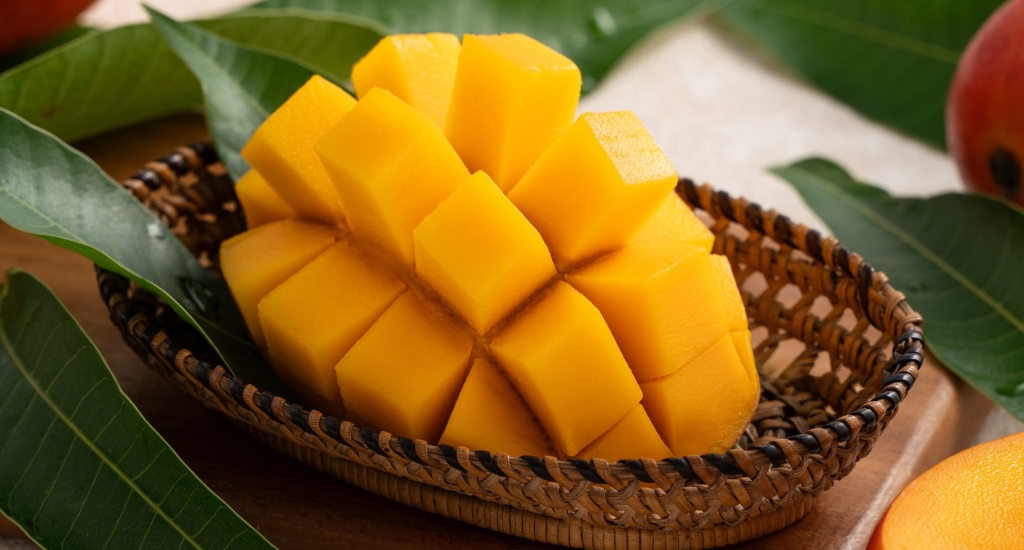
Nothing ‘aam’ about these mango varieties
Move over Safeda, Langda and Chausa – the more popular mango varieties of India. This Mango Day, we do a round-up of some lesser-known regional favourites for you to savour.

Move over Safeda, Langda and Chausa – the more popular mango varieties of India. This Mango Day, we do a round-up of some lesser-known regional favourites for you to savour.
Mango is definitely the king of all fruits, with its luscious, sweet flesh and sunny yellow hues. And making this favoured summer fruit popular are a few names that we are all familiar with – the much-loved varieties such as Langda, Chausa, Dasheri and Safeda. However India is home to over 1,500 varieties of the fruit, according to the National Horticulture Board. And now, with consumer interest growing in regional varieties, you can find many more varieties of mango on offer in the market from the far corners of the country. Here are six mango lesser-known varieties you must try.

As is evident from the name, this variety of mango has a rosy hue to it. The flesh is non-fibrous, making it a good choice for sweetening desserts and shakes. Rich in vitamins C and E, and iron, folate and magnesium, this nutritious fruit is available in the months of May and June, and is grown extensively in Bihar, West Bengal and Jharkhand. Gulab Khas mangoes tend to be small in size, and cost Rs 300 a kg and up on online shopping websites.
Also Read: Bengal farmer on ‘mission mango’ to save the fruit

This variety finds a place in the hearts of mango lovers because of its rich taste and texture. Grown primarily in Andhra Pradesh and Tamil Nadu, each fruit can weigh up to 400 gms and is typically harvested when its colour is a mature green. It’s got a silky flesh with a deep sweet flavour. It is a good source of vitamins A, B, C and E. Its other popular names are Himayat, Hamam and Himam Pasand. Imam Pasand is usually available in the months of May and June, and costs Rs 125 a kg and up on grocery websites.
Also Read: Tangy food craze – appemidi mango pickles

Available from the month of May, the Neelam mango is a variety that is grown not just in India, but in parts of China too. The fruit has a smooth skin and bright yellow colour upon ripening. The flesh could be deep yellow or orange and lacks much fibre. It has an aromatic, almost overpowering taste. The Neelam mango holds its shape when cubed in salads or cut into slices, though it is best enjoyed eaten whole. It sells for Rs 110 to Rs 150 a kg online.

Cultivated in the districts of Malda, Hooghly and Murshidabad in West Bengal, this hugely sweet variety of mango has no fibre, and is perfect for sweetening milkshakes and mango-based sweets. It is rich in nutrients like vitamins A, C and E. It can be sourced from the second week of May to the end of June, and each fruit weighs between 150 gms and 300 gms. The Himsagar variety has even been displayed at mango festivals in the United States, such is its appeal. You can buy it for between Rs 250 and Rs 300 a kg on online platforms.
Also Read: A juicy outcome for Maharashtra mango farmers

Grown mainly in Karnataka, the Badami mango is often hailed as the Alphonso of this region. It is a mid-season entrant that is highly anticipated by mango lovers. When ripened it has pale yellow skin and orange flesh. While mango connoisseurs enjoy it sliced, it can also be used in desserts. It is a rich source of vitamin C, and is best consumed from April to July. Good quality Badami mangoes are available from Rs 180 a kg and up.
Also Read: Kesar mangoes travel from Nashik’s tribal farms to US supermarkets

Here’s a variety that is a cross between a Dasheri and Neelam mango. It was created at the Indian Agriculture Research Institute in 1971. Initially, the Amrapali mangoes were grown at a place called Chakdaha in the Nadia district of West Bengal. This small mango variety retains its green colour even when ripe. Its flesh has an earthy sweetness to it, with vitamin C and pectin being its primary nutrients. It is available in May and June, and can be purchased for Rs 100 a kg and up online.
Also Read: Producers of sweet mangoes feel bitter about losses
The lead image on top shows the king of all fruits, the mango. (Photo from Shutterstock)